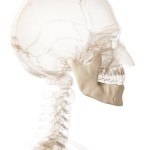
The majority of patients with temporomandibular disorders (TMD) have some form of internal derangement (ID) of the temporomandibular joint (TMJ) is defined as an abnormal relationship between the temporomandibular disc with respect to the as anchored disc phenomenon, disc mandibular condyle, the temporal fossa, and the temporal eminence of the TMJ. 80% of patients with ID can be successfully treated using non-surgical approaches.
The aim of this review was to assess the clinical outcomes of the following three surgical methods for the management of internal derangement (ID) of the temporomandibular joint (TMJ):
- Arthroscopic Lysis and Lavage (ALL)
- Arthroscopic Surgery (AS)
- Open Surgery (OS)
Methods
Searches were conducted in PubMed/Medline and Cochrane CENTRAL databases. A number of relevant journals were also hand searched. Randomised or quasi-randomised controlled clinical trials (RCTs), controlled clinical trials (CCTs), and retrospective studies whose aim was to compare open surgery to arthroscopic surgery for the management of ID of the TMJ were considered. Only English language studies were included.
A single reviewer selected studies and assessed quality. Outcomes included change in maximum inter-incisal opening (MIO) and clinical signs and symptoms (clicking, joint tenderness/pain, and crepitation).
Results
- 7 studies (3 RCTs, 2 CCTs, 2 retrospective studies) involving a total of 884 patients were included.
- 5 studies (227 patients) compared arthroscopic surgery to open surgery.
- 2 studies (657 patients) compared arthroscopic lysis and lavage to arthroscopic surgery
- 3 studies were considered to be at low risk of bias the other 4 at moderate risk.
- For open versus arthroscopic surgery
- Pain measured by VAS there was a statistically significant advantage for the OS group (SMD = -0.40, 95% CI; -0.79 to -0.01).
- For Maximal inter-incisal opening (MIO) > 35 mm there was no significance between the groups (OR = 1.33, 95% CI;0. 56 to 3.18)
- There were no significant differences for mandibular function impairment or clinical signs and symptoms.
- For arthroscopic lysis and lavage versus arthroscopic surgery
- There was a significant difference in favour of patients treated by AS with regard to improvement in MIO (WMD = -11.90, 95% CI; -16.57 to -5.60).
- There was no significant difference in relation to pain WMD -0.18, 95% CI; -0.74 to 0.38).
Conclusions
The authors concluded:
The results of the meta-analysis showed the use of OS to be superior to the use of AS in pain reduction in the management of ID of the TMJ, with comparable MIO, jaw function, and clinical findings. In addition, the present study showed that ALL provides greater improvement in MIO and comparable pain reduction when compared to AS.
Comments
This review was conducted by a single author, which can lead to selection and observer biases that are reduced when two or more reviewers are involved. While two large databases have been searched only articles in English have been included which could mean that other relevant articles have not been included. Only a small number of studies in a relatively small number of patients were available and only two statistically significant outcomes were identified. There was greater pain reduction with OS compared with AS and greater improvement in MIO in ALL compared with AS.
The same author has previously reported a review of arthroscopy versus arthrocentesis and two Cochrane reviews have also considered arthrocentesis for temporomandibular disorders (see Dental Elf -10th Sept 2014).
Links
Al-Moraissi EA. Open versus arthroscopic surgery for the management of internal derangement of the temporomandibular joint: a meta-analysis of the literature. Int J Oral Maxillofac Surg. 2015 Feb 17. pii: S0901-5027(15)00051-X. doi: 10.1016/j.ijom.2015.01.024. [Epub ahead of print] Review. PubMed PMID: 25701306.

Don’t miss – Temporomandibular disorders: open or arthroscopic surgery? http://t.co/gPVfqmVDID